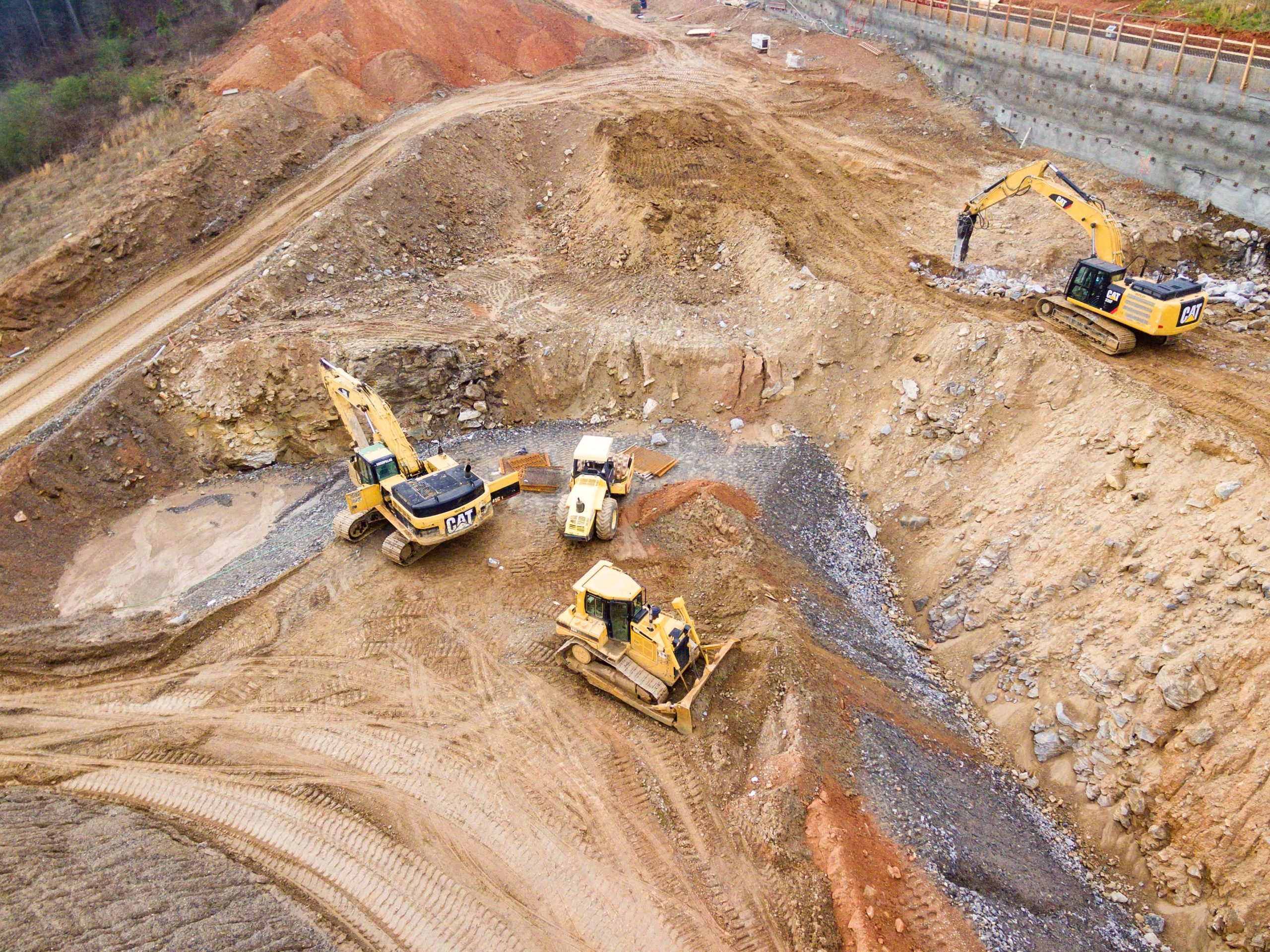- Laws and Guidelines: Guidelines
| Title | Type | Link |
|---|---|---|
|
pdf |
||
|
pdf |
||
|
pdf |
NATIONAL GUIDELINES FOR THE ESTABLISHMENT OF MATERIALS RECOVERY FACILITIES
A Material Recovery Facility (MRF) is a specialized plant that receives, sorts, and processes recyclable waste like paper, plastic, metal, and glass. It uses a combination of manual labour, mechanical equipment, and technology to separate recyclables from other waste and prepare them for sale as raw materials to be remanufactured.
The objective Material Recovery Facility (MRF) guidelines is to guide county governments and other private players on the requirement for establishment and operations of a material recovery facility.
All county governments will be expected to construct material recovery facilities in their respective areas. All stakeholders in the waste value chain must get involved to ensure the MRF functions optimally.
The main goal of a MRF is to maximize the amount of material that can be recycled, which reduces landfill waste and supports environmental sustainability.
MRF Guidelines
| Title | Type | Size | Updated | Counter | Link |
|---|---|---|---|---|---|
|
pdf |
779 KB |
Nov 13, 2025 |
11 |
National Guidelines on Safe Management and Disposal of Asbestos
Asbestos is a hazardous material with extremely fine fibers and can remain suspended in air for hours. If handled without caution, it may cause serious chronic health problems such as asbestosis, lung cancer and mesothelioma. The diseases cause long term serious social, economic and emotional problems. When left intact and undisturbed, asbestos materials do not pose a health risk. It becomes a problem when, due to damage, disturbance, or deterioration over time, the material releases Fibers into the air. Exposure to air containing the fibers increases the risk of inhaling the fibers and developing the associated diseases.
The objectives of these Guidelines are to:
- To ensure environmentally sound disposal of asbestos
- To provide assistance compliance with Environmental Management and Coordination (Waste Management) Regulations, 2006
- To ensure safe removal, handling, packaging and transportation of asbestos.
- To create and raise awareness on hazards of asbestos.
Any person who has any intentions of removing or decommissioning and disposal of any asbestos material should consult the Guidelines on procedures including undertaking EIA and obtaining necessary approval and advice.
E-waste guidelines
Electronic waste or E-waste describes discarded electrical or electronic devices or appliances that have ceased to be of any value to their owners. The e-waste Guidelines have been developed to streamline the procedures of handling and disposal of e-waste generated by various sectors. The e-waste guidelines provide a framework for identification, collection, sorting, recycling and disposing of electrical and electronic waste (e-waste). The guidelines also provide the basis for developing legal instruments to enhance enforcement. The purpose of these guidelines is to assist the government, private sector, learning institutions among others to manage e-waste in a manner that enhances environmental conservation.
| Title | Type | Link |
|---|---|---|
|
pdf |
The EIA guidelines and administrative procedures have been developed to assist in the integration of environmental concerns in economic development to foster sustainable development in Kenya.
| Title | Type | Link |
|---|---|---|
|
pdf |
National Sand Harvesting Guidelines, 2007
These Guidelines will apply to all sand harvesting activities in Kenya. This will ensure sustainable utilization of the sand resource and proper management of the environment. The Guidelines have made considerations for social and environmental interests. Various committees have also been established for both technical advisory and administrative purposes as detailed in the Guidelines.
National Solid Waste Management Strategy
Introduction
Accumulated waste deposits are an indication of societal lifestyles. The waste management affects every person and institution in society. The purpose of this National Solid Waste Management Strategy is to guide sustainable solid waste management in Kenya to ensure a healthy, safe and secure environment for all. The Strategy is a deliberate and visionary commitment for the country in the management of solid waste.
The strategy seeks to establish a common platform for action between stakeholders to systematically improve waste management in Kenya. The measures set out in the strategy cannot be undertaken without a collective approach to waste challenges, and the involvement of a broad range of stakeholders in their implementation.
| Title | Type | Link |
|---|---|---|
|
pdf |
National Guidelines for Strategic Environmental Assessment (SEA)
Strategic Environmental Assessment (SEA) is a range of analytical and participatory approaches that aim to integrate environmental consideration into Policies, Plans, and Programs (PPP) and evaluate the interlinkages with economic and social considerations. Environmental Impact Assessment (EIA) process which in various circumstances has been confused with SEA, inadequately deals with cumulative, synergistic, secondary, and/or long-term impacts which can be addressed when policies, plans, and programs (PPP) are subjected to a Strategic Environmental Assessment (SEA) process. SEA can analytically and systematically integrate environmental issues into PPP formulation through a rigorous stakeholder engagement process among others. SEA is not always mandatory for all PPPs. SEA developers are thus expected to follow the SEA administrative procedures to allow NEMA adequately advise on the need for an SEA.
The National Environment Management Authority and the Ministry of Environment and Natural Resources launched the Kenya’s Environment Action Plan (EAP) Preparation Guidelines on 31st January 2017 at KICC, Nairobi. The guidelines are a product of a participatory consultative process involving many stakeholders. The exercise was coordinated by National Environment Management Authority (NEMA) as per the provisions of EMCA cap 387.
| Title | Type | Link |
|---|---|---|
|
pdf |
PS State Departent of Environment Mr. Charles Sunkuli (C), NEMA Board Chair Mr. John Konchellah (L) and NEMA Dg Prof Geoffrey Wahungu during the launch
In pursuit of development, the environment has become more vulnerable to both natural and human induced changes. Water systems are under threat from pollution and encroachment emanating from human related activities, forests is facing serious degradation as a result of expansion of settlements and agriculture. It is imperative, therefore, that these changes are monitored on a continuous basis and interventions that address such negative impacts on the environment are put in place. Environmental Action planning is intended to provide guidance on solutions to some of these concerns through a systematic planning process.
The Environmental Management and Co-ordination (Amendment) Act, 2015, (EMCA Cap 387) provides for the integration of environmental concerns into national and county policies, plans and programmes through the formulation of:
- County Environmental Action Plan (CEAP) within one year of the commencement of Act and every five years thereafter
- National Environment Action Plan (NEAP) within two years of’ the commencement of the Act and every six years thereafter
- The Environmental Action plans are meant to co-ordinate and harmonize the environmental policies, plans, programmes and decisions of the national and county governments in order to-
- Minimize the duplication of procedures and functions; and promote consistency in the exercise of functions that may affect the environment.
- Secure the protection of the environment across the country; and
- Prevent unreasonable actions by any person, state organ or public entity in respect of the environment that are prejudicial to the economic or health interests of other counties or the country.
The PS State Department of Environment, Mr. Charles Sunkuli presents a copy of the EAP Preparation guidelines to the CEC member for Environment, Nyamira County Hon. Reuben Sinange
Section 40 (5) of EMCA, Cap 387 requires the Cabinet Secretary, on the recommendation of NEMA, to issue guidelines and prescribe measures for the preparation of Environmental Action Plan. The purpose of the guidelines is to provide a standard way of engagement with the stakeholders, generating data, analyzing data, teasing out the major environmental issues and planning for necessary interventions. The guidelines also provide the generic sectors of environment for consideration during the development of Environment Action Plans.
It is expected that the guidelines will facilitate development of action plans which will integrate social, economic and environmental issues with an aim to reduce poverty, enhance equity and generate wealth for the present and future generations. The Environmental Action plans implementation will lead to sustainable development initiatives by both the National and County Government. It also makes provision for conducting research and to build an information base for environmental monitoring and reporting through the State of Environment Reports (SOEs).
The Ministry of Environment and Natural Resources would like therefore to notify stakeholders the launch of Kenya’s Environment Action Plan (EAP) Preparation Guidelines on . The launch will be officiated by Prof. Judi Wakhungu, EGH, the Cabinet Secretary, Ministry of Environment and Natural Resources.
APPLICATION OF THE EMISSION LICENSE UNDER THE AIR QUALITY REGULATIONS, 2014
- Processing of Emission Licenses
This is to notify the operators of air pollutant emitters that the National Environment Management Authority (NEMA) intends to process Emission Licenses under the Environmental Management and Coordination (Air Quality) Regulations, Legal Notice No.34 of 2014.
- To whom does it apply?
All the operators of facilities as well as equipment listed under the 3rd Schedule of the above regulations are obliged to apply for the emission license with immediate effect.
- What is the Application Procedure?
The application procedure for the emission license is under the Emission License Application Guidance Pack which is available on the NEMA website: www.nema.go.ke, under the laws and guidelines drop-down.
- Non-compliance to the Above Requirement.
Enforcement action will be taken against yourselves as guided by the Environmental Management and Coordination Act, cap 387 of 2015 and the Environmental Management and Coordination (Air Quality) Regulations, Legal Notice No.34 of 2014.
For further information you can email: dgnema@nema.go.ke
THE NATIONAL DRAFT GUIDELINES ON MINE SITE DECOMMISSIONING AND REHABILITATION
The development of the National Guideline on Mine Site Decommissioning and Rehabilitation was the change project for National Environment Management Authority (NEMA) staff who participated in the International Training Programme (ITP) 308 for the cohort that ran from 2018 to 2020. The ITP 308 is funded by the Swedish International Development Agency (SIDA) and managed by Geological Survey of Sweden (SGU) in collaboration with Swedish Environmental Protection Agency (SEPA) and Luleå University of Technology (LTU). NEMA institutionalized this project through an ongoing programme dubbed the Environmental Governance Programme (EGP) funded by SEPA through United Nations Development Programme (UNDP). The National Guideline has been developed to address unsustainable practices in the mine sites specifically for artisanal and small-scale mining operations in Kenya.
The Guideline outlines best practices in the industry to assist the mining operators, Ministries, Departments, Counties and Agencies (MDCAs), environmental experts, private sector, Civil Society Organizations (CSOs) and communities in ensuring that the mining sites are sustainably decommissioned and rehabilitated upon cessation of the mining operations. This will ensure protection of the environment as well as public health and safety through elimination of adverse environmental effects resulting from the mining activities.
NEMA has finalized the draft of the Guideline and is planning to undertake meaningful stakeholder participation within all the regions in the country before commencement of its implementation.
| Title | Type | Link |
|---|---|---|
|
docx |
| Title | Type | Link |
|---|---|---|
|
docx |
| Title | Type | Link |
|---|---|---|
|
pdf |



